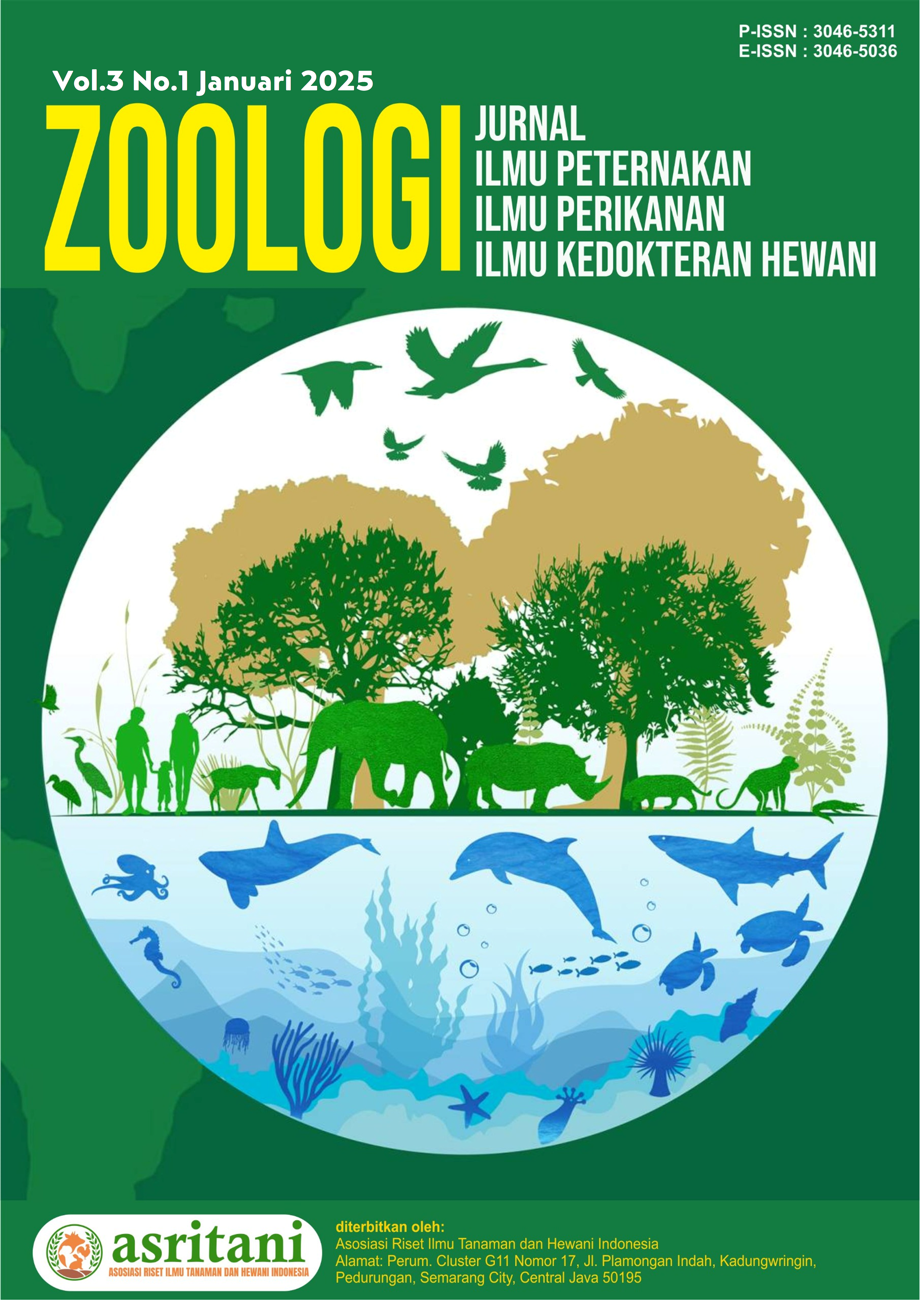Analisis Pengelompokkan Provinsi di Indonesia Berdasarkan Indikator Kinerja Sektor Peternakan Sapi Tahun 2022
DOI:
https://doi.org/10.62951/zoologi.v3i1.93Keywords:
Cluster, Hierarchical, Non-Hierarchical Analysis of Animal HusbandryAbstract
Indonesia, based on natural resource potential, has great potential to achieve beef self-sufficiency. The contribution of this sector is not only limited to meeting food needs in the form of beef, but also includes economic aspects such as providing employment opportunities, industrial raw materials, and increasing the income of local farmers. This shows that the development of this sector has great potential in supporting food security and improving community welfare. Therefore, research was conducted on performance indicators that could influence the performance of the cattle farming sector in Indonesia in 2022 using cluster analysis. Cluster analysis is a statistical method that identifies groups of samples based on similar characteristics. Cluster analysis has two methods, namely hierarchical and non-hierarchical. This research focuses on classifying regions in Indonesia into groups based on similar characteristics. In this research, cluster analysis assumptions will be tested, namely the multivariate normal distribution test, conducting cluster analysis using hierarchical and non-hierarchical methods, characterizing the data in each cluster, then drawing conclusions and suggestions from the research results. Based on the research results obtained on data characteristics, it was found that variables tend to have a variety of data. Hierarchical cluster analysis uses the single linkage method which has an optimum number of clusters of 4. The highest number of cluster members is in cluster 1. Then cluster 1 shows the highest performance in the cattle farming sector. In non-hierarchical cluster analysis using the k-means method which has an optimum number of clusters of 5. The highest number of cluster members is in cluster 4. Then clusters 2, 3 and 4 show higher performance in the cattle farming sector compared to clusters 1 and 5 .
References
I. Andi Nuhung, "Kinerja, Kendala, Dan Strategi Pencapaian Swasembada Daging Sapi," Forum Penelitian Agro Ekonomi, vol. 33, no. 1, pp. 63-80, 2015.
M. A. Dr. Sumanto, Statistika Deskriptif Untuk Mahasiswa, Dosen dan Umum Center Of Academic Publishing Service, Yogayakarta: Center Of Academic Publishing Service, 2017.
H. Yulianto, Statistika 1, Yogyakarta: Lembaga Ladang Kata, 2016.
T. Hidayati, I. Handayani and I. H. Ikasari, Statistika Dasar, Banyumas: CV Pena Persada, 2019.
U. Sekaran and R. Boougie, Research Methods for business: A skill Building Apporach, New York: John Wiley & Sons Inc, 2016.
R. Wahyuni, S. Nugroho and P. Novianti, "ANALISIS KLASTER DENGAN MENGGUNAKAN METODE SINGLE LINKAGE DAN METODE K-MEANS," FMIPA, UNIB, Bengkulu, 2015.
F. Ramdhani, A. Hoyyi and M. A. Mukid, "PENGELOMPOKAN PROVINSI DI INDONESIA BERDASARKAN KARAKTERISTIK KESEJAHTERAAN RAKYAT MENGGUNAKAN METODE K-MEANS CLUSTER," JURNAL GAUSSIAN, vol. 4, pp. 875-884, 2015.
M. . F. Al Farizi, F. Harianto, M. S. Dewanti and dkk, "Pengelompokan Daerah di Jawa Timur Berbasis Indikator Kesejahteraan Masyarakat dengan Pendekatan Analisis Cluster Hierarki dan Nonhierarki," Jurnal Inferensi, vol. 6, 2022.
K. Setiawan, Anova Satu Arah, Lampung: FAKULTAS PERTANIAN UNIVERSITAS LAMPUNG, 2019.
D. R. P, D. N. Larasati and R. F. R, Analisis Rumah Tangga Usaha Peternakan Di Indonesia, Jakarta: Badan Pusat Statistik, 2014.
S. Handayani and M. Priyanto, "Analisis Impor Daging Sapi di Indonesia Tahun 2000-2019," Jurnal PENA, pp. 136-141, 020.
Ditjen PKH, Statistik Peternakan dan Kesehatan Hewan 2021, Jakarta: Kementerian Pertanian, 2021.
F. A. Marino, A. Lomboan, E. Pudjihastuti and E. H. B. Sondakh, "BERAT POTONG, BERAT KARKAS DAN PERSENTASE KARKAS TERNAK SAPI POTONG LOKAL YANG DIPOTONG DI RUMAH POTONG HEWAN MANADO," Jurnal Zootec, vol. 40, pp. 191-195, 2020.
M. Chafid, Analisis pemotongan dan Produksi Daging dan Kerbau, Jakarta: PUSDATIN-SETJEN Kementerian Pertanian, 2020.
W. Saputra, "The Influence of Customer Relationship Management and Service Performanceon Customer Satisfaction and its Implications forCustomer Loyalty of Islamic Banks in Riau," Jurnal Al-Buhuts, pp. 148-159, 2024.
M. I. Hijaya, Hasibuddin and A. Wahab, "PENGARUH KUALITAS COSTUMER SERVICE TERHADAP LOYALITAS NASABAH DALAM PERSPEKTIF EKONOMI SYARIAH," QANUN: Journal Of Islamic Laws and Studies, 2023.
B. Sartono and A. Hidayatuloh, Visualisasi Data yang Efektif, Bogor: IPB Press, 2021.
J. Kurniawan, Hartono, A. Z. Fahmi and dkk, Analisis dan Visualisasi Data, Bandung: Widina Bhakti Persada Bandung, 2023.
Ilhamsyah and S. Rahmayudha, "Perancangan Model Dashboard Untuk Monitoing Evaluasi Mahasiswa," J. Inform, J. Pengemb. IT, vol. 2, pp. 13-17, 2017.
S. Rohcahayana, "STRATEGI PENINGKATAN KINERJA ANGGOTA PETERNAK SAPI PERAH DI KOPERASI PRODUKSI SUSU DAN USAHA PETERNAKAN (KPS) BOGOR," 2023.
Downloads
Published
How to Cite
Issue
Section
License
Copyright (c) 2024 Zoologi: Jurnal Ilmu Peternakan, Ilmu Perikanan, Ilmu Kedokteran Hewan

This work is licensed under a Creative Commons Attribution-ShareAlike 4.0 International License.





